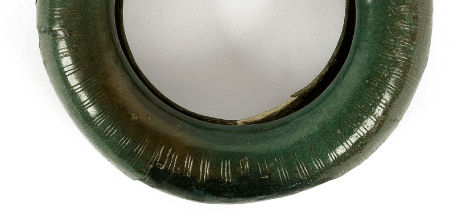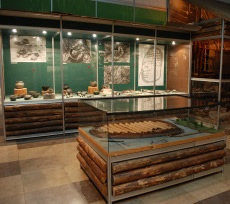


The exhibition "Biskupin" is primarily addressed to kids and school children for whom coming to the exhibition is often the first contact with the archeology. The exhibition in a simple way presents the daily life of the population of the Lusatian culture in the fortified settlement built on an island of Biskupin Lake in the early Iron Age (about 2700 years ago). The remnants of the settlement were discovered in 1933, by a local school teacher Walenty Szwajcar and already since the start of the first excavations in 1934, this unique archaeological site quickly gained fame and publicity not only in Poland but also abroad. The settlement has been examined in 75% and provided extensive information about building development, the defense system, and also the daily life of its inhabitants. The exhibition presents the photographs from the pre-war excavations, among which stands out the photograph of the peninsula with the exposed part of the settlement made from a balloon. The attractive elements of the exhibition are: a model of the settlement, a model showing the construction of a hut, as well as restored interior of the hut from Biskupin and its equipment – a fireplace, a loom, farming tools and objects of everyday use.
A follow-up of the exhibition is a half-hour long film about Biskupin titled "Settlement on the Lake"